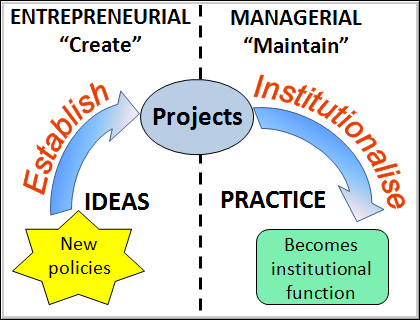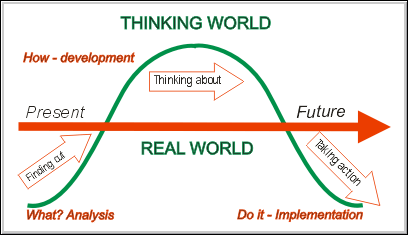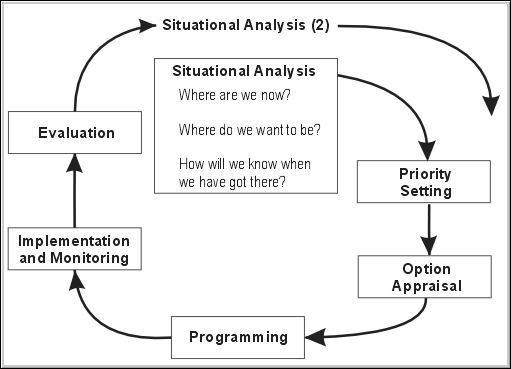| Module 6: Occupational Health Management - Section 7: Principles of Management |
| OHM 7.4: Managing a service with an emphasis on Project Management - Part 1 |
Project management is a particular approach to achieve short-term objectives. Projects are sets of co-ordinated activities aimed at achieving new and tangible objectives within a specified time period. However the broad principles behind project management can be applied in almost all spheres of management as managers set about figuring out what to do and how to achieve it.
Project management is often used to introduce new policies and can bridge the divide between ideas and practice. The way in which the divide is crossed is by establishing and creating new services and delivery mechanisms, which once established, are institutionalised and become part of the organisational "habits" and activities. For example introducing an HIV/AIDS workplace programme into a company can be achieved through project management. Once the programme is established, it becomes institutionalised and forms part of ongoing operational management. Refer to the Figure below. The setting up of a new project, for instance, a medical surveillance system, is basically an "entrepreneurial or creative" activity that in time is institutionalised and becomes part of the "maintenance" activity.

The language of project management emphasises concepts such as achieving objectives, being on time, planning, scheduling, making a tangible difference, keeping tight control of costs and operations. It is the rational scientific language of scientists and engineers, emphasising the factual and the logical, solving problems by gathering factual information, analysing the situation, deciding rationally on the best possible option and so on.
Project management is based on a very simple logic, the basis of which is to be found in the "decision making model" - identification of a problem or situation followed by the development of various options and, lastly, the selection of a particular choice and action. The initial state of the project is located in the real world as we identify the problem and find out more about the problem. We then enter a phase of thinking about the real world - as we consider different options regarding solutions to the problems. The final phase is once again located in the real world as the options selected are implemented and action is taken.

This is a similar process to the more familiar planning cycle (Figure three below) in which we undertake a situational analysis (finding out), assess options and prioritise them (thinking about) and then implement , monitor and control (take action).
